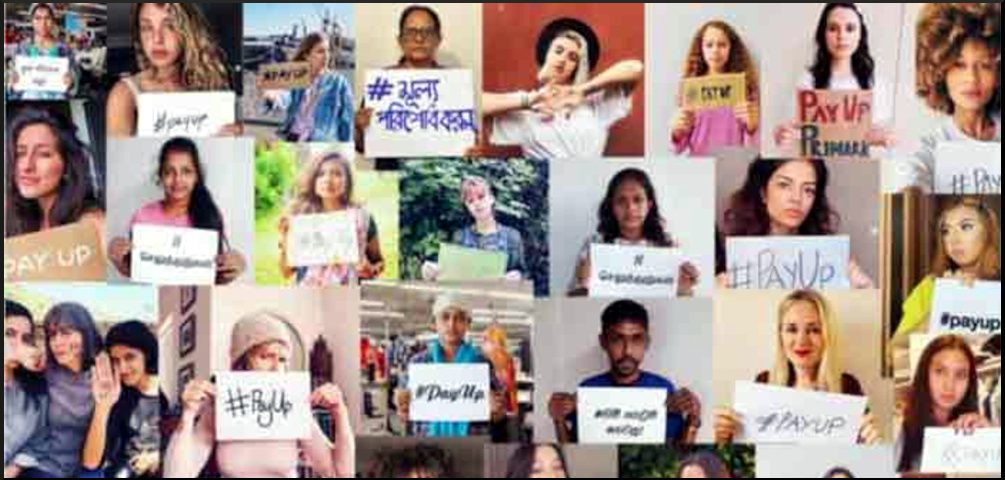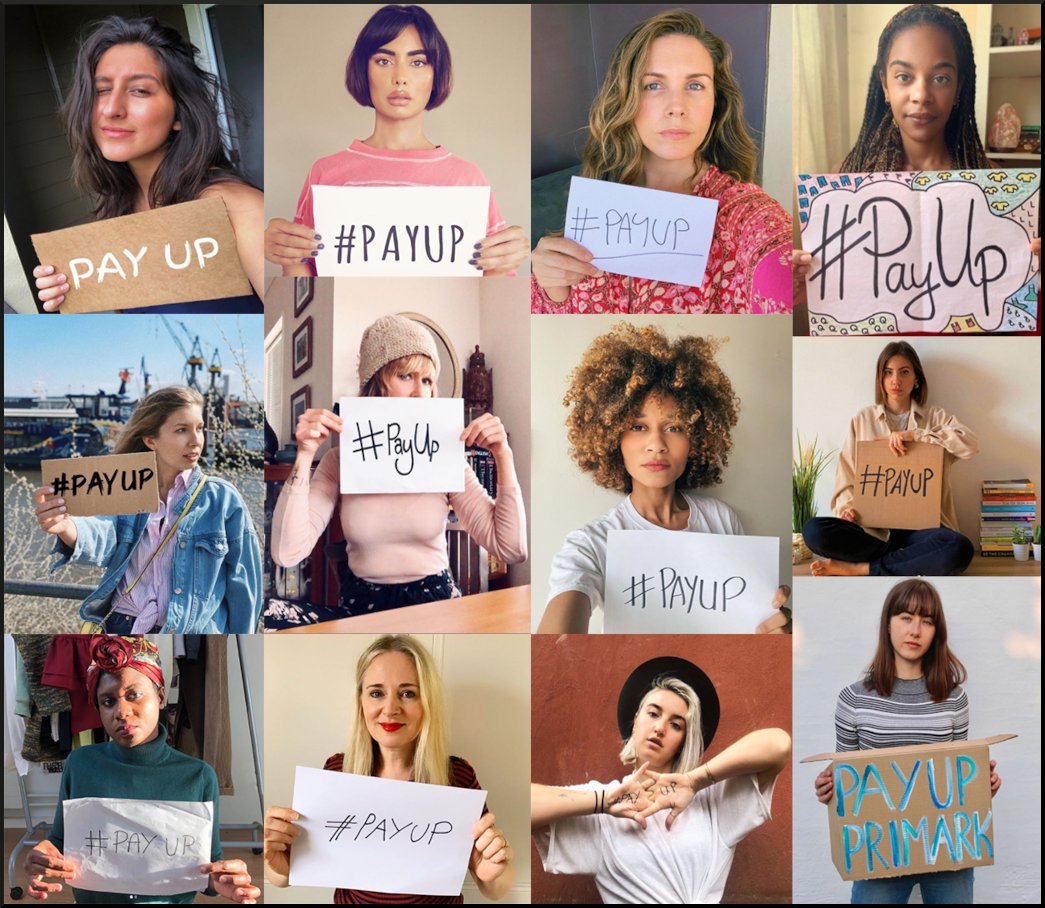by Loretto Graceffo, published on Waging Nonviolence, March 19, 2021
The PayUp campaign has clawed back $22 billion from apparel companies owed to factories and workers, and they’re just getting started.
This is an interesting case study. It is current yet I haven’t seen information about it anywhere until today. The original headline claims an overwhelming victory, but actually much the original theft from workers has yet to be recouped. They got to keep their jobs but have not been compensated for lost wages. One of the interesting aspects of this case is that most of those affected are women, and they are working in the United States as well as the Global South in diverse low payed jobs. [jb]
In March 2020, Amanda Lee McCarty was laid off from her job.
For years, she had been working in the fashion industry as a buyer and product developer. But as COVID-19 cases surged and lockdown orders were implemented across the world, retailers were faced with a dramatic plummet in consumer demand for clothing. McCarty, who had been the sole breadwinner in her family for most of her life, was left without a steady income or health insurance.
McCarty wasn’t the only one in the global apparel industry whose future was thrust into uncertainty.
Thousands of miles away, in countries like Bangladesh, Sri Lanka and Cambodia, apparel factories had just received catastrophic news from retailers in the West. In order to offset the financial losses of the pandemic, executives had made a swift and nearly universal decision: They were going to steal $40 billion from their most vulnerable workers.
“This wasn’t theoretical money,” said Elizabeth L. Cline, who works with the consumer activist nonprofit Remake. “This was garment workers not being paid for work already done, which is slavery.”
For many brands, this theft was not only legal, but outlined in their contracts with factories overseas, which enabled them to cancel orders at any time. Retailers cited a force majeure clause to claim that they didn’t need to take clothing they had ordered before the pandemic — and they also didn’t have to pay for it, even if the product had already been made after hundreds of hours of painstaking labor.
This decision was enforced by nearly all of the world’s most profitable apparel companies, only 20 of whom control 97 percent of the industry’s profits. Among the offenders were Walmart, Sears, Kohl’s, Nike, Forever 21, H&M, Gap, Adidas, The Children’s Place and Ross Stores.
What followed was one of the largest transfers of wealth from the Global South to the West in recent history.
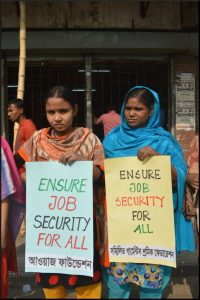
The effect of the cancellations was immediate: factories, who could no longer afford to pay textile mills and workers, were forced to shut their doors. Millions of garment workers, most of them young women, were sent home without severance or pay.
While wealthy fashion brands continued to deliver shareholder payouts, workers already living in poverty were plunged even deeper into debt and starvation.
“Why were companies so comfortable robbing their factories in the middle of the biggest humanitarian crisis of our lifetimes?” Cline said. “It had a lot to do with the fact that the people impacted were in the Global South. They were women of color, who companies were used to being able to subjugate without any consequences — who they thought weren’t going to stand up to them.”
The companies were wrong. In a matter of days, a movement was born, comprised of non-governmental organizations, or NGOs, and thousands of garment workers, grassroots organizers and consumers across the globe. They named their first campaign after their primary demand: PayUp.
By March 2021, PayUp had secured $22 billion from brands who had initially refused to pay, and laid bare the exploitation fundamental to the global supply chain. It was one of the most successful labor rights campaigns in the fashion industry in modern times — and activists say they’re just getting started.
“This is an industry that is part of every person’s life, but nobody really knows what happens behind the scenes,” said McCarty, who became a vocal advocate for the movement after being laid off from her job.
“If a brand is refusing to pay up, it’s likely they’re paying slave wages in the first place, and not caring about the climate and burning billions of dollars of excess clothing every year. When you take a step back, the fashion industry is really a case study of everything that is wrong in the world right now.”
Holding brands accountable
From its foundation, PayUp’s strategy has been to discern which brands are moveable and to then target those brands using grassroots pressure.
“We knew if we were going to wait for fashion brands to gain a conscience, nothing was going to change,” said Cline, one of the founders of the movement. “It was public knowledge who canceled, so we had a list of companies and the amount of money they owed, but we needed a bigger picture of what was happening.”
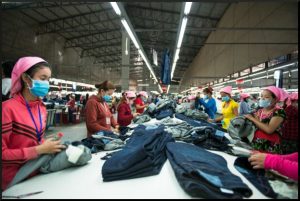
Because of this, the testimony of garment workers themselves has been critical to the success of PayUp. In November 2020, the Worker Rights Consortium released a survey of garment workers who had lost their jobs across Cambodia, Bangladesh, El Salvador, Ethiopia, Haiti, Indonesia, Lesotho and Myanmar. Nearly 75 percent of these workers reported going into debt to buy food since the pandemic began. Many described skipping meals in order to feed their families, being unable to afford food with protein, and having to withdraw their children from school due to lack of funds.
Garment workers who remained employed, many of whom were working overtime to produce personal protective equipment for countries in the West, were similarly plunged into destitution. Even as the world’s most profitable fashion brands saw an 11 percent increase in value over the past year, garment workers experienced pay cuts averaging around 21 percent.
“When you’re working in the industry, you know there are people that aren’t being paid, but they’re sort of these ‘others’ that you don’t know,” McCarty said. “It allows you to say, ‘Oh, things are different where they live’ or ‘These people are unskilled.’ All these other functions of racism, classism and colonialism are so baked into every person.”
By the summer of 2020, #PayUp had been shared on social media millions of times. A Change.org petition, which was sent to over 200 fashion executives directly, garnered nearly 300,000 signatures calling on companies to pay for the cancellations. Behind the scenes, NGOs and activist groups like Remake, the Worker Rights Consortium and Clean Clothes Campaign moved in tandem to negotiate with brands.
This pressure was combined with direct action by workers around the world. In response to factory shutdowns that left thousands in the apparel industry without jobs, workers in Myanmar went on strike, eventually securing a wage bonus and union recognition through a two-week sit-in. In Cambodia, around one hundred workers marched to the Ministry of Labor to submit a petition requesting compensation after their factory shut down. When they weren’t offered a resolution, protesters continued their march to the prime minister’s house, where they were blocked by nearly 50 police officers.
Similar actions took place in Pakistan after factories cut holiday bonuses that usually allowed rural workers to return home for Eid. Striking workers gathered in protest outside factories, chanting slogans demanding better wages even as police fired shots into the crowd. In Bangladesh, garment workers who staged protests outside factories were also met with opposition, with many workers reporting that they had been attacked by police with batons, water cannons and tear gas while they were sleeping.
To date, 21 brands monitored by PayUp have committed to paying for cancelled orders in full, unlocking a total of $22 billion for factories and garment workers globally. Eighteen brands have still refused to pay — and many have deleted #PayUp comments on their social media accounts in an attempt to shut down the conversation.
A deepening crisis
Despite the tremendous victories of the PayUp campaign so far, the past few months have revealed worrying trends within the industry, and the crisis surrounding garment workers continues to worsen. The vast majority of the money PayUp secured from brands went to factories, enabling them to pay their debts to textile mills and stay open. While this has potentially prevented even more disastrous factory closures and mass layoffs, most workers still haven’t received their stolen wages — and the crisis surrounding the garment industry continues to deepen.
“Throughout the pandemic, I’ve seen retailers squeezing factories for lower costs and pushing them for faster turnaround,” McCarty said. “Even more product is being imported into our country by plane, instead of by boat, so the carbon footprint is even worse — and people overseas are being paid even less. We have to end the cycle now.”
One year after the founding of PayUp, garment workers who are struggling for survival have yet to see any financial relief from brands. There is also the issue of safety; in Sri Lanka, over 7,000 cases of coronavirus, more than half the nation’s total, were traced back to a factory that manufactures clothing for Victoria’s Secret.
In many apparel-making countries, garment workers who demand safety measures have been met with brutal repression, facing threats, physical attacks, dismissal and imprisonment for speaking up or attempting to organize. One of the most recent examples of this repression took place in March, when nearly 1,000 garment workers who produce clothing for Primark were allegedly locked inside factories for hours to prevent them from joining anti-coup protests in Myanmar.
“Brands’ labor codes and monitoring systems don’t exist to protect workers,” said Scott Nova, the executive director of the Worker Rights Consortium.“ They exist to protect the image and reputation of brands … even as they squeeze suppliers on price, driving down working conditions and wages.”
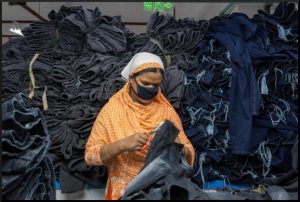
Perhaps the most compelling illustration of the failures of self-regulation can be seen in garment factories in Bangladesh. For decades, these factories were notorious for being little more than death traps. Despite frequent mass fatality fires and factory collapses, major brands and retailers continued to tout their voluntary codes of conduct as a reliable method of protecting workers. It was only after the collapse of the Rana Plaza factory in 2013 — a disaster that killed 1,134 people and injured another 2,500 — that meaningful protections were put into place.
Even as rescue workers were still searching for survivors in the rubble, thousands of garment workers and relatives of the dead rose up, storming the streets of Dhaka to demand safer working conditions.
Within a month, the Bangladesh Accord on Fire and Building Safety was launched, requiring independent building inspections and reviews of safety standards. The accord functions as an international compact between NGOs, Western manufacturers and Bangladeshi and global unions. Since the program began, two and a half million garment workers have been working under vastly safer conditions — and Nova believes the accord can serve as a roadmap for accomplishing PayUp’s long-term goals.
“We need contractually enforceable commitments from brands, and we need brands and unions sitting across the table in real negotiation,” Nova said. “If we want brands to behave responsibly, we need to get it in writing.”
Last fall, PayUp founder Ayesha Barenblat sat down with the founder of the Awaj Foundation, an NGO that represents 600,000 garment workers in Bangladesh and Sri Lanka. Together, they launched the website for Pay Up Fashion, where they outlined seven demands for action going forward: worker’s safety, transparency, giving workers a platform, enforceable contracts, an end to starvation wages and the implementation of labor laws.
“Besides a handful of rich factory owners, executives and shareholders, it’s an industry where there aren’t a lot of people benefiting,” Cline said. “I think brands wanted a pat on the back after they paid up, but for us, the campaign revealed everything that’s broken about the fashion industry.”
Resisting a return to business as usual
Around the same time PayUp was founded, McCarty utilized her insider experience to launch Clotheshorse, a podcast exposing dark truths about the world of fast fashion. It was the start of a new chapter — and an inadvertent decision to never return to the industry, no matter the financial consequences.
“Coming from a lower-class background, it’s been challenging knowing what goes on behind-the-scenes and having to keep going,” McCarty said. “For so long, I felt like a hamster running in a wheel, going to this toxic, abusive job that I hated. There is something very strange and liberating about no longer having a job, because now I can speak the truth about it.”
Over the course of more than 60 episodes, Clotheshorse has explored issues like labor rights, greenwashing, consumerism and the PayUp movement. McCarty often features the stories of retail workers, who can call through a hotline to speak about common practices such as non-disclosure agreements, wage theft and requirements that unsold merchandise be destroyed.
Before long, McCarty was getting up to a hundred messages a day from fashion lovers and activists. Though the pandemic prevented them from meeting in person, Clotheshorse listeners began coming together online to call out brands, quit fast fashion and support one another’s sustainable businesses.
“A lot of people found their lives completely upside down last year, and we’ve all been getting educated about things that we weren’t before,” McCarty said. “It’s amazing that we were all able to find each other and respond to one another’s ideas — I feel so lucky that at least once a week I start to cry.”
As PayUp enters its second year of campaigning, this kind of community building could prove essential to ensuring the movement doesn’t lose momentum.
“PayUp was able to reveal the inner workings of this power dynamic that was hidden from view for a long time,” Cline said. “That’s made it much easier to propose reforms, but everybody has to be ready to fight for the long haul. The fashion industry we want to see is going to take commitment and perseverance — and a belief that anything is possible.”
Loretta Graceffo is a writer, artist and activist from New Jersey. She currently attends Saint Peter’s University.
